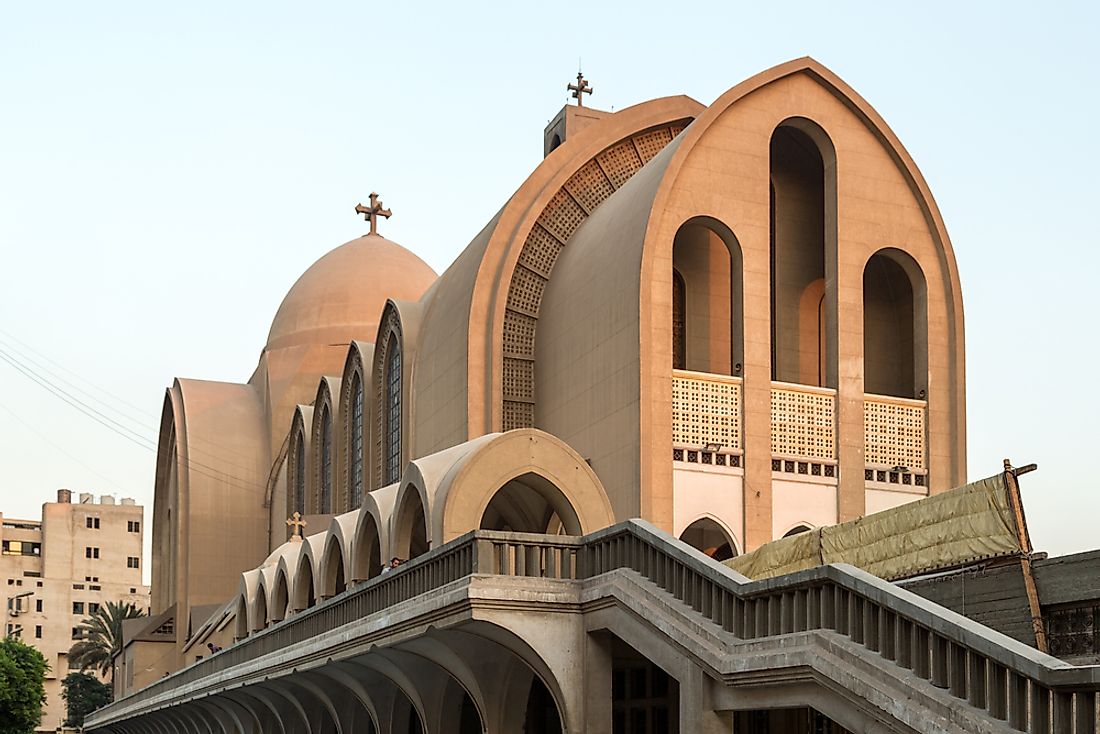History Of The Coptic Christians

Coptic is a Greek word referring to an Afro-Asiatic language of the native land of Egypt, and it originated from the ancient Egyptians. It is an extinct language since the sixteenth century and has remained only as the liturgical language of the Coptic Church. Coptic Christians are the Christians that are living in Egypt. They came into existence after the ascension of Jesus Christ at around 42 CE. Saint Mark who was the writer of the gospel of Mark first introduced Christianity in Egypt. He began teaching the gospel of Jesus Christ during the rule of Emperor Claudius.
History
Apostolic Foundation
The Bible describes Egypt as the country where the holy family sought refuge; Mary and Joseph sought refuge by fleeing from Judea to Egypt when King Herod had ordered the execution of all firstborn male children. They hid there until the death of King Herod, and this became the fulfillment of the old prophecy; out of Egypt, I called my son as written in Mathew 2:12-23. The original Egyptian Christians were ordinary individuals who spoke the Coptic Language.
According to history, they spoke the Coptic language, which originated from the Demotic Egyptian that was expressed throughout the Roman period. The Coptic Christians are the oldest religion in the Middle East dating back to 42 CE. Moreover, the Copts are the most significant Christian community in Sudan containing approximately 1% of the Sudanese population. The term Copt was approved in English at the beginning of the seventeenth century. In accordance with new Latin, “Coptus” is derived from the Arabic language. The word “Coptic” is also an adaptation of the Greek word for the indigenous people of Egypt.
The Copts have thrived as a distinctive spiritual community making around ten to twenty percent of the population. Coptic Christianity was first introduced in Egypt in Alexandria by St. Mark, and it spread like bush fire throughout Egypt within half a century.
Contribution to Christianity
Catechetical School of Alexandria
The catechetical school was founded by St. Mark in 190 CE. In this institution, scholars such as Clement and Pantanaeus taught students. The students gained knowledge about Christianity and this led to the spread of Coptic Christianity in Egypt. Question and answer method was first used here, and students were therefore tested to see if they had gained knowledge and applied it accordingly. Saint Mark wrote over six thousand commentaries of the Bible.
The Copts also contributed significantly to the creation and organization of monasticism. Monasticism is a spiritual approach to life in which one renounces worldly pursuits and commits himself or herself entirely to the Christian worship. Anthony the Great and Paul of Thebes, are the most recognized figures of monasticism movement. By the end of the fifth century, there were many monasteries, cells, and thousands of caves scattered throughout the desert of Egypt; this made the pilgrims to visit Egypt occasionally to copy the spiritual lives of the desert fathers. The first school contributed to the growth of Christianity in Egypt since many scholars were created and they, in turn, went out and spread the gospel.
Ecumenical Councils
An ecumenical council is a collection of religious persons such as bishops, pastors, and the entire church that gather together to discuss important matters of faith. Egyptian patriarchs were the first to lead the first three ecumenical councils, proving that Alexandria contributed majorly to the establishment of philosophy and theology in Egypt. The primary mandate of patriarchs was to calculate and announce the exact dates of Easter annually.
Council of Chalcedon
According to the Catholic Church, the council of Chalcedon is the fourth ecumenical council. The council described Chalcedon stating that the son of God is perfect both in a deity and in humanness. The council's conclusion and definition concerning the divine marked a significant point in the Christological debates. It led to the division of the Alexandrian church in 451 CE into two subdivisions; those who abided by the rules of the council became recognized as the Chalcedonians while those that did not abide by the rules were known as Monophysites.
The Monophysites or non-Chalcedonians as sometimes referred to reject the name and regarded themselves as Miaphysites. A more significant percentage of the Egyptian population associated themselves to the Miaphysites branch resulting in the persecution of the Miaphysites in Egypt led by the Byzantines. Arabs conquered Egypt and fought with the Byzantine army in 641 CE. Local resistance by the Egyptians sprout after this conquest and only lasted until the ninth century.
Copts of Modern Egypt
Arabs conquered the Egyptians, and this made the Coptic Christians in Egypt to be subjected to harsh rules because Arabs practiced Islam. For example under the Muslim law, the Coptic Christians were forced to pay special taxes; they were denied access to political power and were also not allowed to join military service. It, however, did not last for long, in the 19th century under the rule of Muhammed Ali who abolished the tax on non-Muslims and allowed the Egyptian Christians (Coptic Christians) to take part in military services. In 1854-61, Pope Cyril IV reformed the church and encouraged the Coptic Christians to take part in political affairs. They gained more power in 1863, and they were even appointed as judges and given political representation in the government. Consequently, the Coptic Christians once again thrive in Egypt.
Although the Coptic Christians originated from Egypt, they have spread widely to other neighboring countries and Africa at large. Sudan has a minority number of Coptic Christians adding up to about 500,000. The population is approximately 1% of the Sudanese population. The Copts are also widely spread across Libya with the Coptic Orthodox church being the largest with a population of approximately 60,000 believers.











